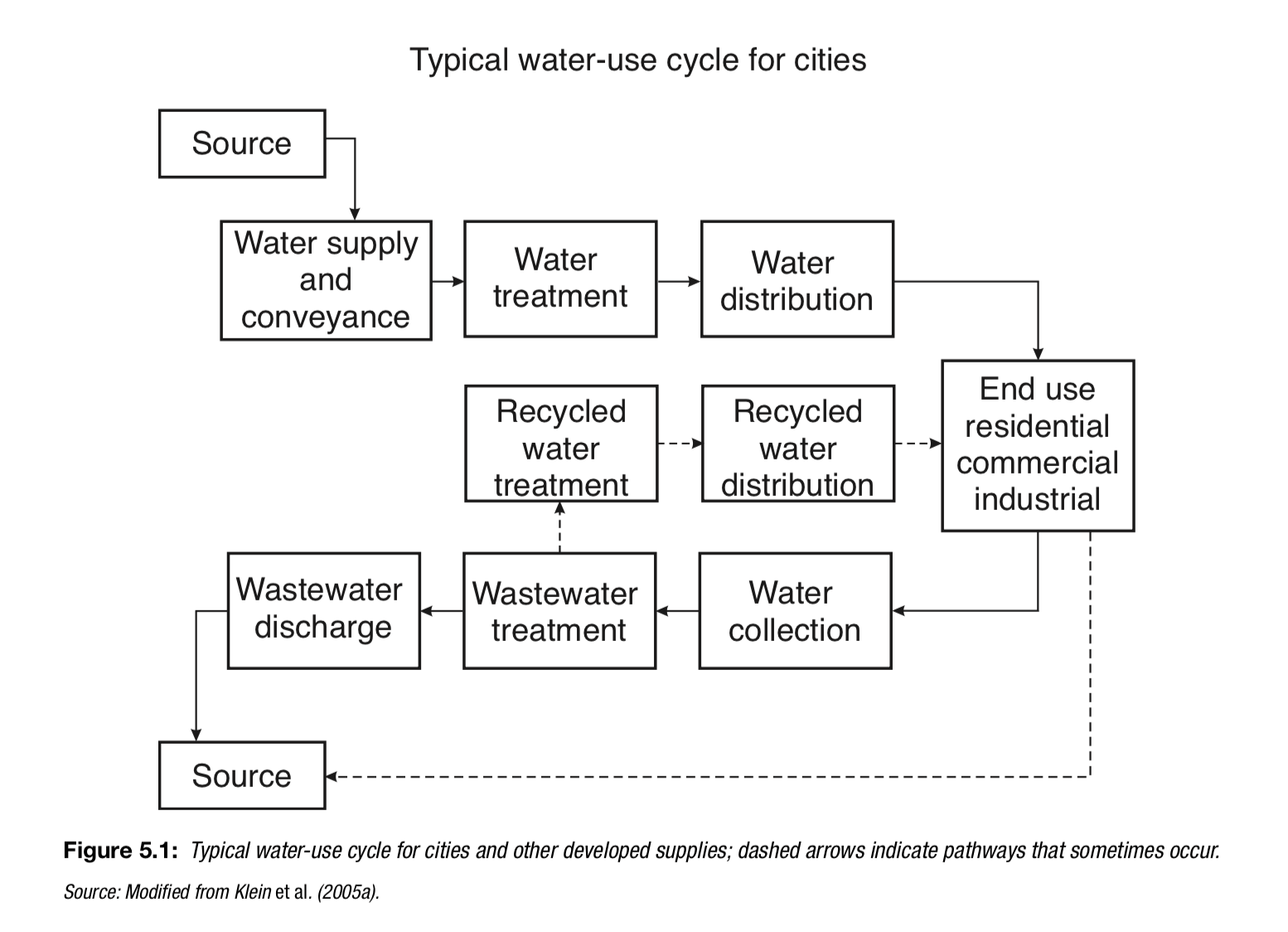I found the reading, Climate Change and Cities: First Assessment Report of the Urban Climate Change Research Network part III.5 very fascinating. I found it very interesting because it spoke about how the demand of water is exceeding the supply all over the world due to growing populations and climate change. In cities like Calgary in Canada, the demand is exceeding the supply by almost 50 percent. This resonated with me because I have been to Calgary many times and I often fall into the trap of thinking that there aren’t water supply issues in Canada, since I mostly hear about them in the United States. Due to this supply and demand issue, cities have turned to different solutions that I didn’t realize were as prevalent as they are. I did not realize that these sources might be used as a primary source of water, especially because I hadn’t thought much about where the majority of our water really comes from until now.
This flow chart shows the typical path water takes to get to the consumer and back to the source.
The reading talked about how there are many solutions in place in different cities around the world such as groundwater pumping. Groundwater pumping is used as a primary water source in cities like Shanghai, Venice, and Hanoi. The other interesting note that the reading mentioned about those places is that they are all located on major river systems but still mainly rely on groundwater. However, groundwater pumping is also used in Fresno and Mexico City which are not necessarily located on major river systems.
I also learned about other primary sources of water that have been developed due to changes within population size and climate change. Imported water is the primary supply in San Diego, California, while other cities like Avalon on Santa Catalina Island, California, are using double plumbing systems. This means they are supplied with both a potable water stream and a wastewater stream using sea-water.
Another aspect that I found really interesting was that in Lagos, Nigeria there is currently an issue with pollution from wastewater. The reading said that the pollution from their wastewater is their greatest threat to the sustainable use of possible primary sources of water such as surface and ground water. Lagos is a megacity and one of the world’s fastest growing urban centres. There is no central sewage system and less than 2% of the population of the megacity is served with off-site sewage treatment which are not in very good shape. This is something I take for granted since we have places in the city like Newtown Creek, which we learned about on the Circle Line field trip.

